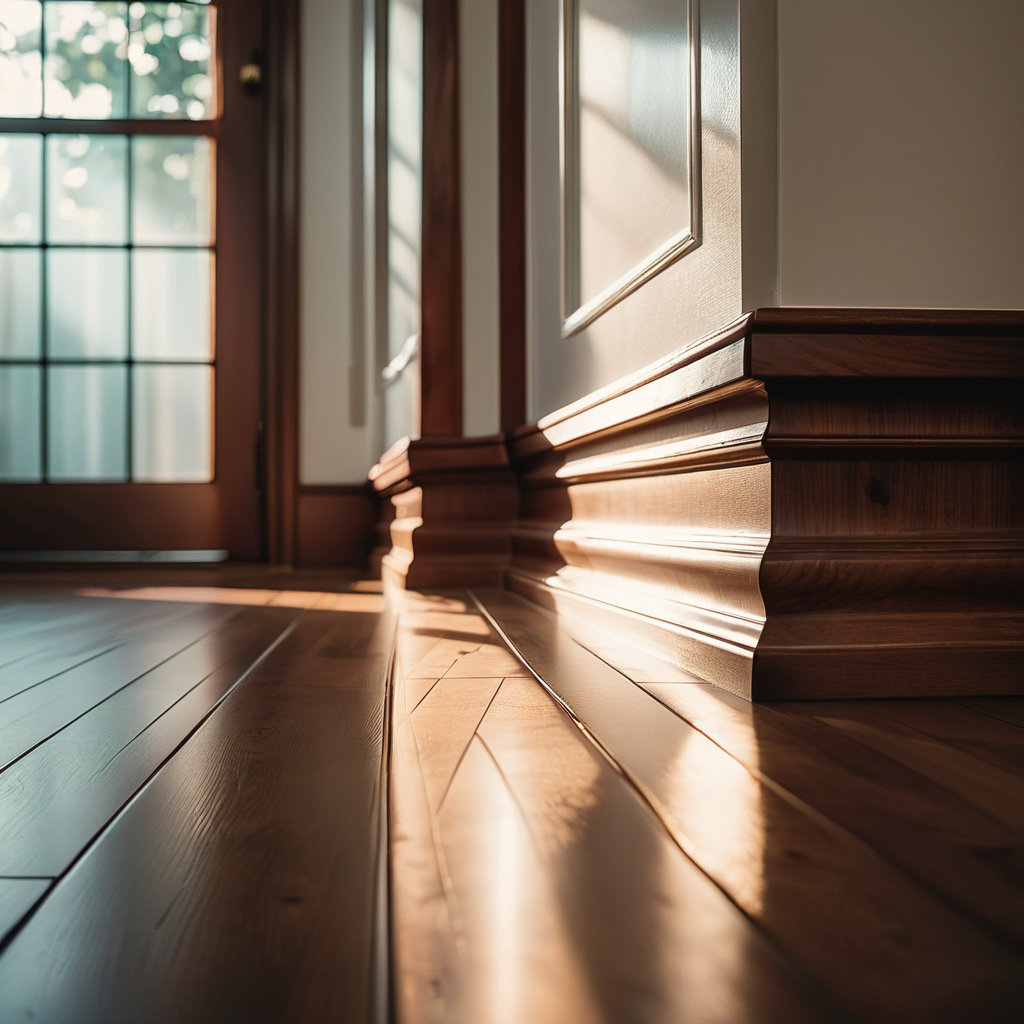
Baseboards are a fundamental element of interior design that often go unnoticed but play a crucial role in enhancing the aesthetics, functionality, and overall appeal of a space. These architectural features serve both practical and decorative purposes, providing a finishing touch to walls, concealing gaps, protecting surfaces, and adding visual interest to rooms. In this comprehensive guide, we will delve into the world of baseboards, exploring their different types, styles, installation methods, and creative applications to help you elevate your space and transform your home into a stylish and cohesive environment.
- Types of Baseboards:
- Wooden Baseboards: Wooden baseboards are classic, versatile, and timeless, adding warmth, richness, and character to any room. They come in various wood species, profiles, and finishes, allowing for customization and compatibility with different interior styles.
- MDF Baseboards: Medium-density fiberboard (MDF) baseboards are cost-effective, durable, and easy to paint, making them a popular choice for modern homes. MDF baseboards offer a smooth, uniform surface that can be seamlessly integrated into contemporary interiors.
- Vinyl Baseboards: Vinyl baseboards are moisture-resistant, low-maintenance, and budget-friendly, making them ideal for high-traffic areas, such as kitchens, bathrooms, and basements. Vinyl baseboards come in a range of colors and textures to suit various design preferences.
- Styles and Profiles:
- Colonial Baseboards: Colonial baseboards feature a simple, traditional design with a gentle curve or beveled edge that complements a wide range of architectural styles, from colonial to transitional.
- Modern Baseboards: Modern baseboards are sleek, minimalist, and clean-lined, often featuring a straight profile, sharp angles, and a smooth finish that adds a contemporary touch to interiors.
- Victorian Baseboards: Victorian baseboards are ornate, intricate, and decorative, showcasing elaborate details, patterns, and moldings that evoke the opulence and grandeur of the Victorian era.
- Installation Methods:
- Nail-On Installation: Nail-on baseboards are secured to the wall using finishing nails or brad nails, providing a secure and permanent attachment method that ensures stability and longevity.
- Floating Installation: Floating baseboards are mounted on a separate base shoe or quarter round, creating a floating effect that allows for expansion and contraction of the flooring materials without causing damage to the baseboards.
- Adhesive Installation: Adhesive baseboards are affixed to the wall using construction adhesive or mounting tape, offering a quick, easy, and mess-free installation method that eliminates the need for nails or screws.
- Creative Applications:
- Color Blocking: Painting baseboards in a contrasting color or finish can create a striking visual impact and highlight the architectural details of the space.
- Layered Molding: Layering baseboards with crown molding, chair rails, or wainscoting can add depth, dimension, and sophistication to walls, elevating the overall design aesthetic.
- Integrated Lighting: Installing LED strip lights or rope lights behind baseboards can illuminate the floor, create ambient lighting, and enhance the mood and ambiance of the room.
In conclusion, baseboards are more than just functional trim elements—they are design features that can elevate the style, character, and personality of your home. By choosing the right type, style, and installation method for your baseboards and exploring creative applications and design possibilities, you can transform your space, enhance its visual appeal, and create a cohesive and harmonious interior that reflects your unique taste and lifestyle. Whether you prefer classic wooden baseboards, modern MDF baseboards, or versatile vinyl baseboards, incorporating baseboards into your interior design scheme can make a significant difference in the look and feel of your home, adding a finishing touch that ties the room together and leaves a lasting impression on all who enter.
Cedar Hill St. Louis Jefferson County Olivette Kirkwood Ballwin Arnold Franklin County St Charles County Fenton High Ridge Dittmer Creve Coeur
